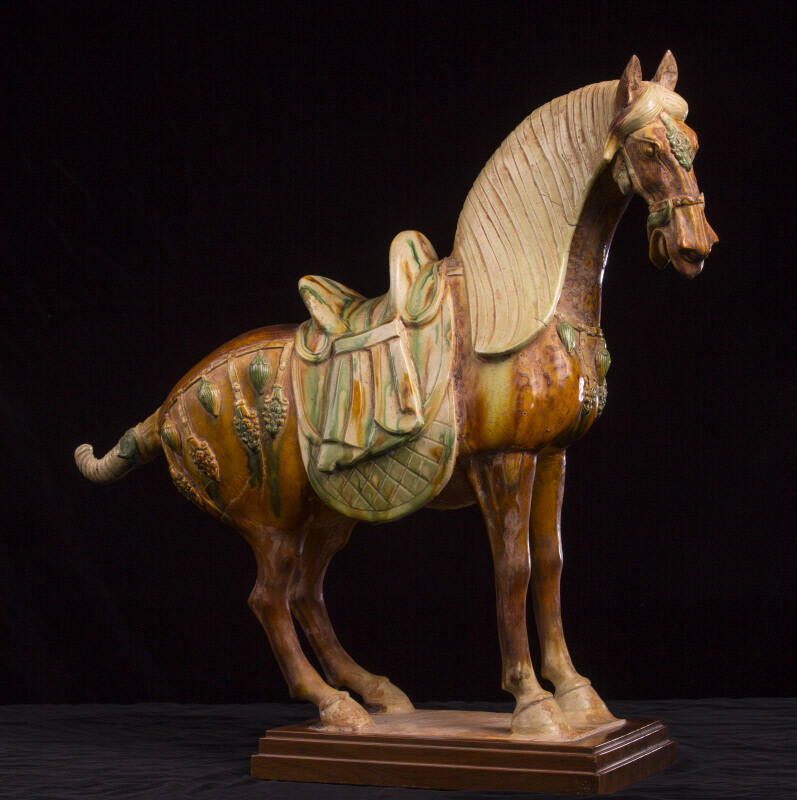T'ang Horse
Object NameSculpture
Date618-906
OriginChina
MediumGlazed pottery
Dimensions22 1/2 x 24 x 7 1/2 in. (57.2 x 61 x 19.1 cm)
1 1/8 x 7 3/4 x 11 3/4 in. (2.9 x 19.7 x 29.8 cm)
ClassificationsSculpture
Credit LineGift of Ann and Henry Brunnier. In the permanent collection, Brunnier Art Museum, University Museums, Iowa State University, Ames, Iowa.
Object number2.2.13
Status
Not on viewCollections
CultureChinese
DynastyTang
Label TextMany figures from the Tang era are remnants of Chinese burial traditions that called for representations of daily life to be entombed with the deceased to assure social status in the afterlife. Horses were symbols of prestige, power and wealth, and for much of China's history, have represented the spirit of the Chinese. The horse embodies not only imperial might but also national development. Fine horses were sought by the Chinese as early as the third century B.C., when they began to trade with nomadic horse breeders in western Asia. Swift cavalry horses were also urgently needed to by the Chinese military campaigns against invaders who were constantly threatening the northern and western borders.
The largest, most elaborate and in many ways the most beautiful effigies of these horses were made during the Tang Dynasty, specifically in the eighth century. During the Tang period, ceramic artists mastered naturalistic accuracy as well as controlled polychrome lead glazing. Powerful shapes blanketed with amorphous glazes created a balance design that unified form and color. Typical characteristics of Tang ceramics can be seen in these horses, such as their three different colored glazes, long thin lines of crazing and the elaborate detailing of the saddles.
PeriodTang Dynasty
Locations
- (not entered) Iowa State University, Scheman Building (Iowa State Center), Brunnier Art Museum
Object Name: Sculpture
Christian Petersen
1953-54
Object number: UM2000.2













